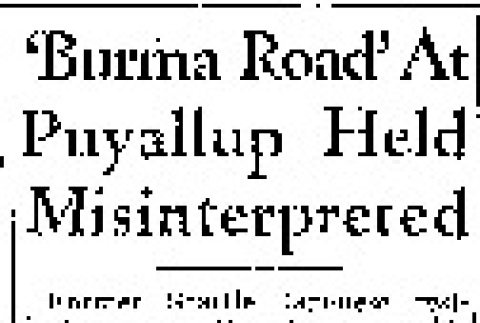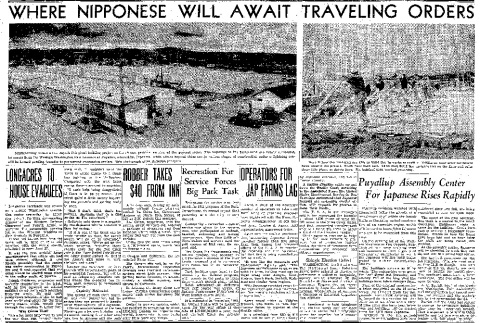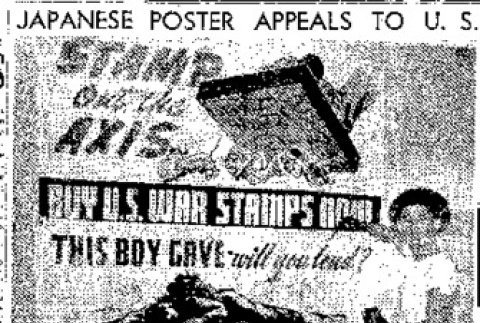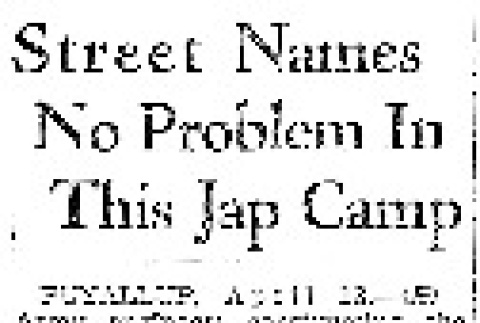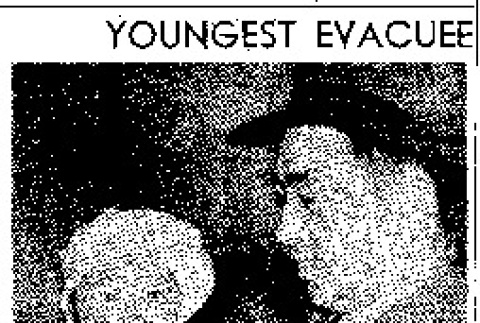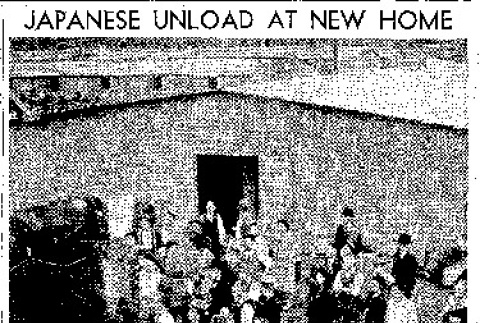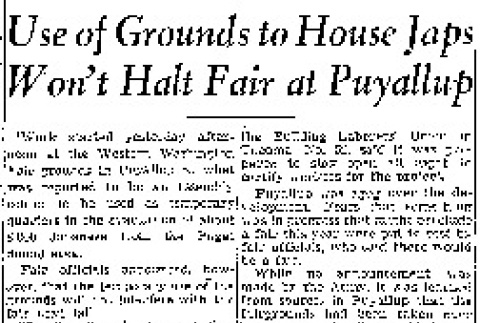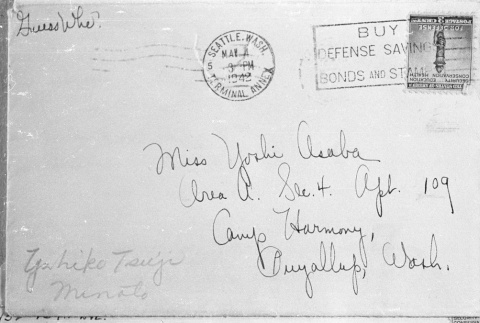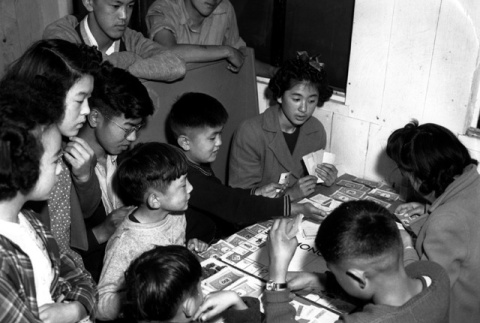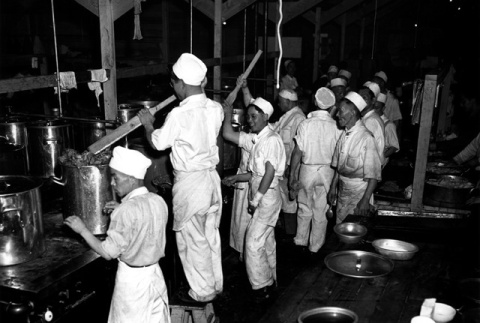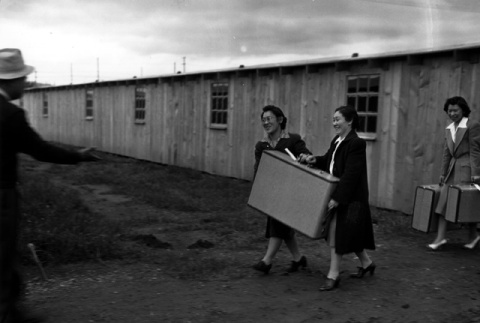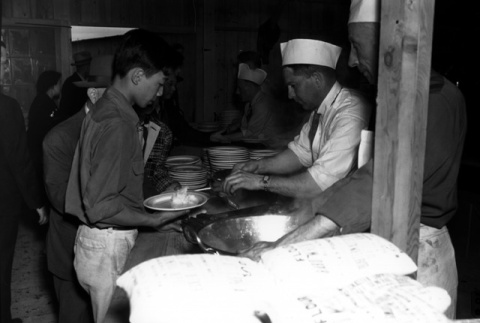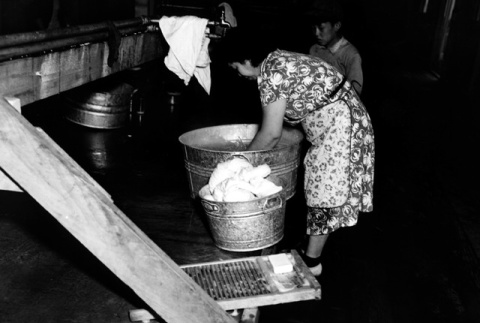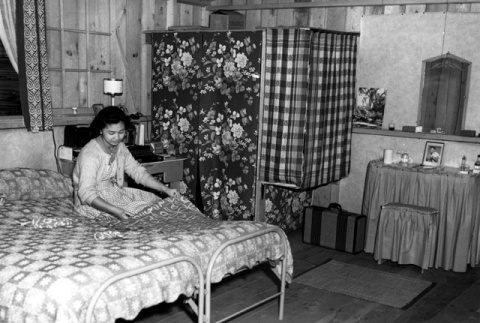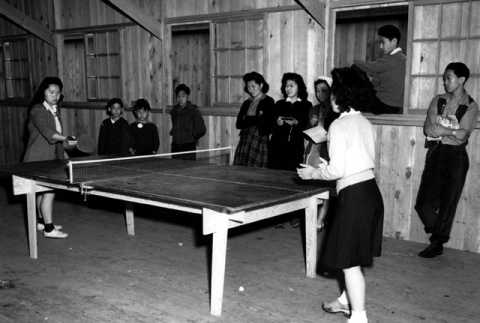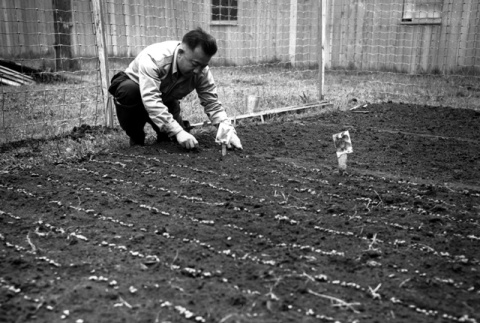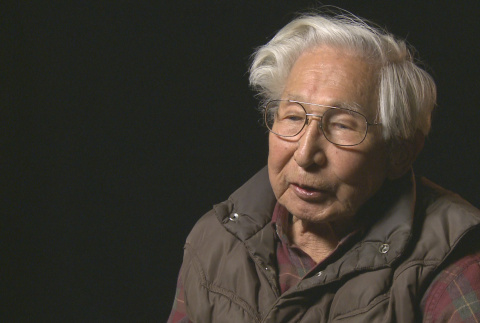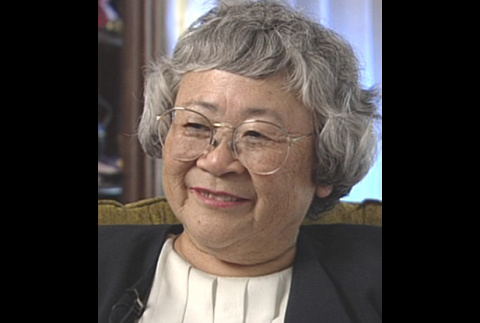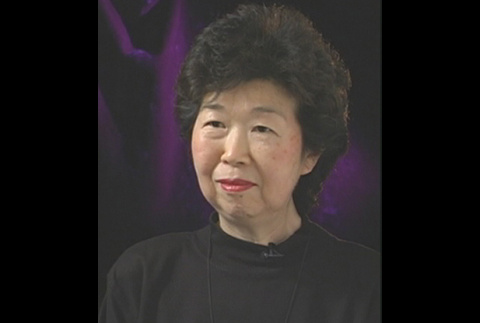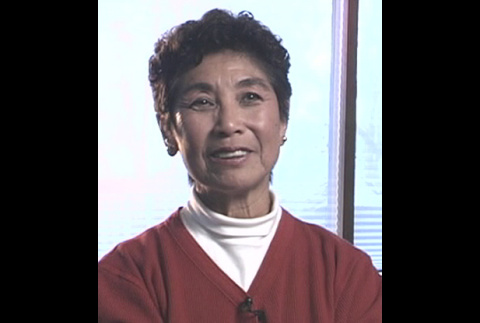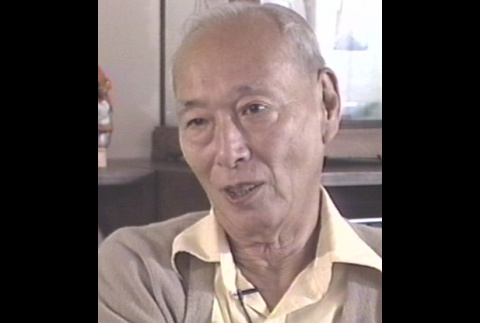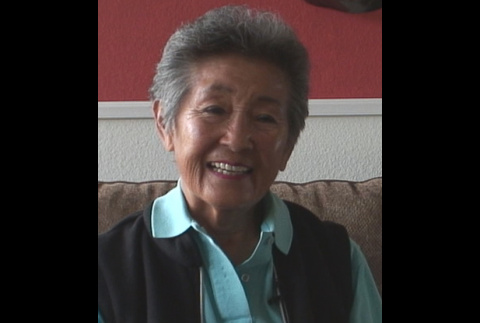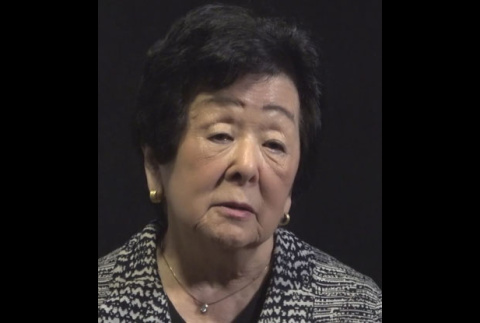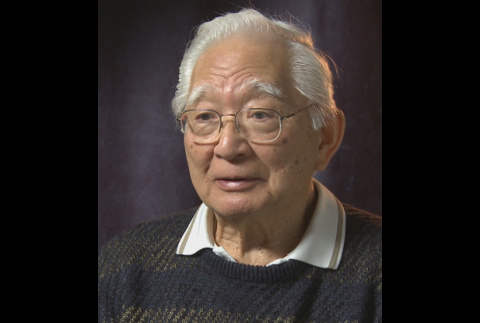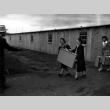323 items
323 items

doc
'Burma Road' At Puyallup Held Misinterpreted (May 18, 1942) (ddr-densho-56-801)
The Seattle Daily Times, May 18, 1942, p. 10
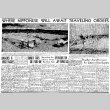
doc
Where Nipponese Will Await Traveling Orders. Puyallup Assembly Center For Japanese Rises Rapidly. (April 2, 1942) (ddr-densho-56-739)
The Seattle Daily Times, April 2, 1942, p. 20
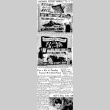
doc
Tojo a Rat in Puyallup Evacuee's War-Bond Poster (July 19, 1942) (ddr-densho-56-824)
The Seattle Daily Times, July 19, 1942, p. 8
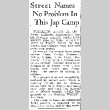
doc
Street Names No Problem in this Jap Camp (April 13, 1942) (ddr-densho-56-752)
The Seattle Daily Times, April 13, 1942, p. 16
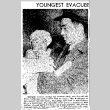
doc
Youngest Evacuee (April 29, 1942) (ddr-densho-56-779)
The Seattle Daily Times, April 29, 1942, p. 14

doc
Japanese Unload at New Home (April 29, 1942) (ddr-densho-56-780)
The Seattle Daily Times, April 29, 1942, p. 14
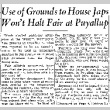
doc
Use of Grounds to House Japs Won't Halt Fair at Puyallup (March 29, 1942) (ddr-densho-56-727)
The Seattle Daily Times, March 29, 1942, pp. 1, 8
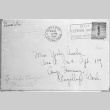
doc
Envelope sent to an assembly center (ddr-densho-13-13)
This envelope contained a letter sent by Yoshiko Tsuji Minato to Yoshi Asaba at the Puyallup Assembly Center.
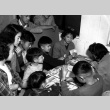
img
Group playing Monopoly (ddr-densho-36-38)
Japanese Americans did their best to lead normal lives in the Puyallup Assembly Center. They cultivated gardens, engaged in different types of activities, and played games such as Monopoly.
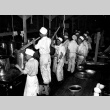
img
Japanese Americans cooking (ddr-densho-36-34)
The assembly center was composed of blocks, each with its own kitchen and dining area.
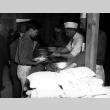
img
Japanese American receiving lunch (ddr-densho-36-42)
The assembly center was composed of blocks, each with its own kitchen and dining area.
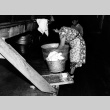
img
Japanese American washing clothes (ddr-densho-36-36)
The Puyallup Assembly Center was composed of a number of blocks. Each block had a communal washroom, such as the one shown here.
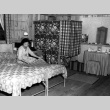
img
Barracks interior (ddr-densho-36-39)
Barracks apartments were small--approximately 8 by 10 feet or 15 by 20 feet--and offered little privacy. Japanese Americans tried hard to make the stark apartments homier. They made furniture, such as the vanity table in this redecorated barracks apartment, which was constructed by hand from scrap lumber.
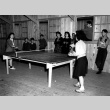
img
Group playing Ping-Pong (ddr-densho-36-37)
Japanese Americans made every effort to lead normal lives in the Puyallup Assembly Center. They cultivated gardens, engaged in different types of activities, and played games such as ping-pong.
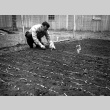
img
Japanese American gardening (ddr-densho-36-35)
Japanese Americans tried hard to make life at the assembly center bearable. Here, a camp inmate tends to a garden.

vh
Warren Koichi Suzuki Interview (ddr-densho-1000-410)
Nisei male. Born February 27, 1921, in Seattle, Washington. At age ten, was sent to Japan to live and attend school. Returned to Seattle prior to World War II. During the war, was removed to the Puyallup Assembly Center, Washington, and the Minidoka concentration camp, Idaho. Answered "no-no" on the so-called "loyalty questionnaire" and was transferred …

vh
Marion Tsutakawa Kanemoto Interview (ddr-densho-1000-148)
Nisei female. Born December 30, 1927, in Seattle, Washington. Lived in Japan for fifteen months as a child, before returning to Seattle to attend junior high school. After the bombing of Pearl Harbor, father was picked up by the FBI and taken to the Department of Justice camp at Missoula, Montana. Removed to the Puyallup Assembly …

Narrator Akiko Kurose
Nisei female. Born February 11, 1925, in Seattle, Washington. During World War II, incarcerated at the Puyallup Assembly Center, Washington, and Minidoka concentration camp, Idaho. Longtime civil rights activist, educator, and pacifist.

Narrator Peggy Tanemura
Ni-ten-gosei (half Nisei, half Sansei) female. Born June 3, 1932, in Seattle, Washington. Incarcerated at the Puyallup Assembly Center, Washington; Minidoka concentration camp, Idaho; and Tule Lake segregation center, California. Returned to Seattle after the war and stayed temporarily at the Seattle Japanese Language School.

Narrator June Takahashi
Nisei female. Born July 21, 1926, in Petersburg, Alaska. Both mother and father were jailed in Petersburg after the bombing of Pearl Harbor. Incarcerated at the Puyallup Assembly Center, Washington, and Minidoka concentration camp, Idaho. Resettled in Seattle, Washington.

Narrator Akio Hoshino
Nisei male. Born April 28, 1919, in Seattle, Washington. Spent prewar years in Seattle's Central area. Incarcerated at the Puyallup Assembly Center, Washington, and Minidoka concentration camp, Idaho. Resisted draft orders and was imprisoned at McNeil Island Penitentiary, Washington. Resettled in Seattle area after release.

Narrator Irene Yamauchi Tatsuta
Nisei female. Born May 3, 1935, in Seattle, Washington. Grew up in Seattle. During World War II, removed to the Puyallup Assembly Center, Washington, and the Minidoka concentration camp, Idaho. After leaving camp, returned to Seattle and became a teacher.

Narrator Lois Shikami
Nisei female. Born August 25, 1931, in Seattle, Washington. During World War II, incarcerated at the Puyallup Assembly Center, Washington, and the Minidoka concentration camp, Idaho. After leaving camp, lived in Wisconsin for several years before eventually moving to Chicago, Illinois.

Narrator Gene Akutsu
Nisei male. Born September 23, 1925, in Seattle, Washington. Spent prewar childhood in Seattle's Nihonmachi. Incarcerated at Puyallup Assembly Center, Washington, and Minidoka concentration camp, Idaho. Refused to participate in the draft and was imprisoned at McNeil Island Penitentiary, Washington, for draft resistance. Resettled in Seattle.
